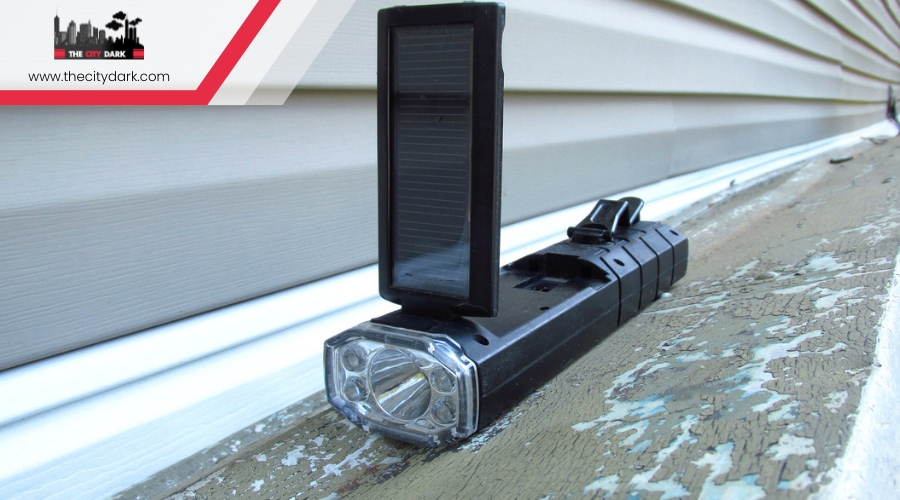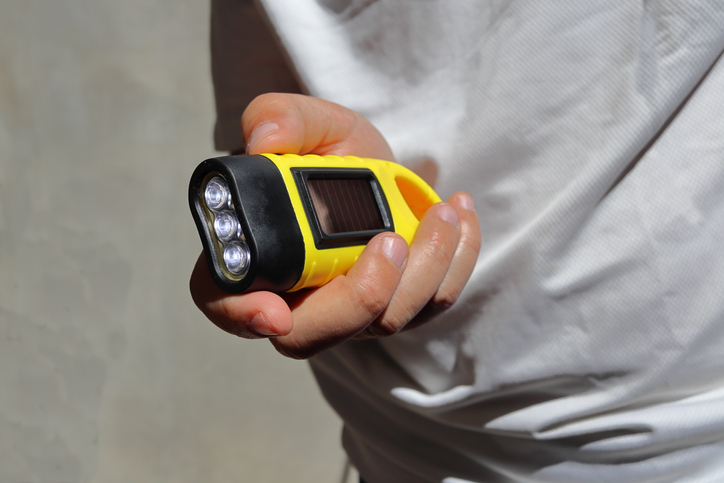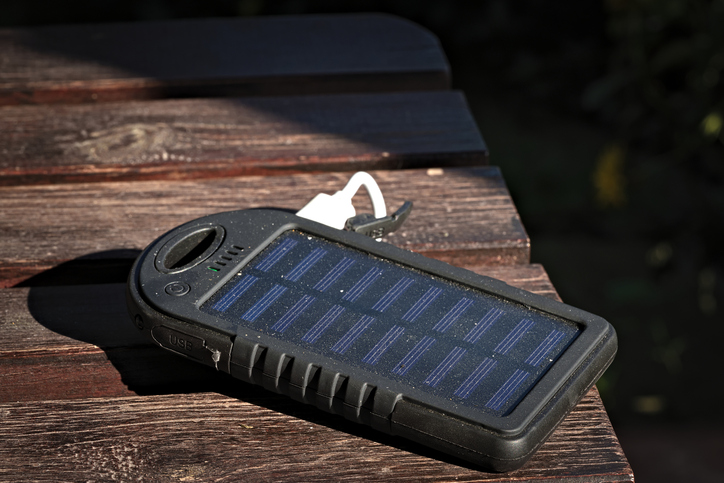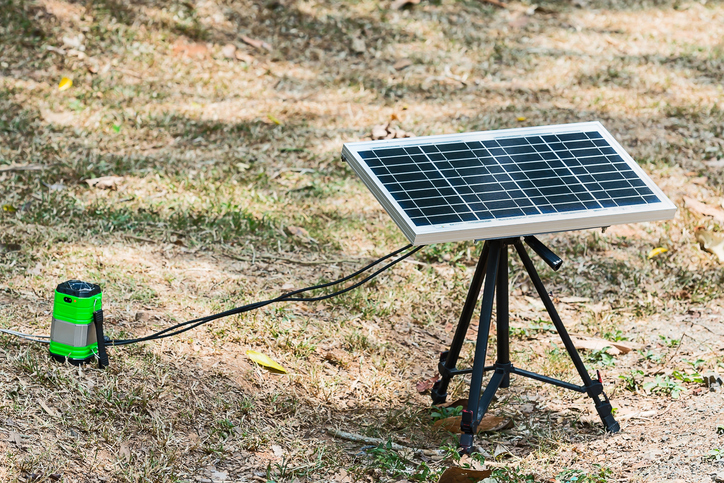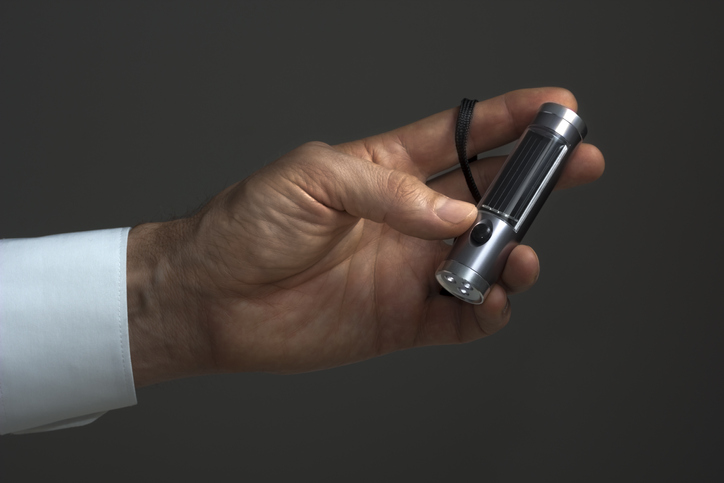You’ve heard about their sustainability and appreciated their eco-friendliness. You’ve probably marveled at the simplicity behind solar-powered flashlights. However, when disaster strikes and the lights go out for days, weeks, or even months, can you truly rely on them to light your way?
As sunlight bathes our planet in abundant energy, these devices promise a seemingly infinite source of power. Yet, questions about their battery life, durability under harsh conditions, and actual light output linger.
Let’s explore whether these solar marvels stand up to the test of time and elements, offering not just a glimmer of hope but a steady beacon in the darkness of long-term crises.
Key Takeaways
- Solar flashlights provide sustainable and reliable light during long-term disasters by harnessing sunlight and converting it into electrical power.
- They have longer battery life and higher efficiency compared to traditional flashlights, especially when properly maintained and exposed to sunlight.
- Solar-powered flashlights are designed to be durable and resistant to extreme weather conditions, making them reliable in unpredictable situations.
- They offer versatile charging options, including solar panels and USB, ensuring constant power availability even in areas with no traditional power sources.
Understanding Solar Flashlights
Solar flashlights harness sunlight to provide a sustainable and reliable source of light, making them an essential tool during long-term disasters. With solar technology at their core, these flashlights convert energy from the sun into electrical power, storing it for later use. Unlike traditional flashlights that require batteries or external power sources, solar flashlights ensure you’re not left in the dark when it matters most.
You’ll find that solar flashlights are incredibly eco-friendly. They don’t deplete natural resources or pump greenhouse gases into the atmosphere. This means you’re choosing a lighting option that’s kind to the planet while keeping you prepared for emergencies.
Moreover, LED flashlights powered by solar energy are known for their efficiency and longevity. LEDs consume less power and have a longer lifespan, which makes solar flashlights a cost-effective choice. You’re not just saving on the cost of batteries over time; you’re investing in a durable solution that can withstand the rigors of long-term use.
In a world where being prepared for the unexpected is crucial, solar flashlights offer you a way to become self-reliant. They reduce your dependence on external energy sources, especially when the main power infrastructure is compromised. This self-sufficiency is invaluable during prolonged disasters, ensuring you have continuous access to light.
Battery Life and Efficiency
Understanding the longevity and efficiency of the batteries in your solar-powered flashlight is key to ensuring you’re never left in the dark during an emergency. Solar-powered flashlights boast a longer battery life and higher efficiency than their traditional counterparts, mainly due to advancements in battery storage systems and solar panel technology. The secret lies in the quality and capacity of both the solar panel and the battery technology utilized.
For your flashlight to maintain its efficiency over prolonged periods, it’s essential to ensure proper maintenance and regular exposure to sunlight. This not only maximizes battery life but also enhances overall efficiency. Among the various types of batteries, those with lithium-ion technology are particularly notable for their longer lifespan and superior energy efficiency.
Choosing solar-powered flashlights equipped with high-quality, efficient solar panels and batteries is crucial for reliable performance during disasters. Such devices are designed to withstand the test of time, offering you peace of mind when you need it most. Remember, the reliability of your flashlight in long-term scenarios greatly depends on these components’ battery life and efficiency.
Durability in Extreme Conditions
You’ll find that the durability of solar-powered flashlights is crucial when you’re facing long-term disasters. Their ability to resist weather and maintain performance under stress ensures you’re never left in the dark, regardless of the conditions.
Features like high-grade materials and tactical settings further prepare you for any emergency situation.
Weather Resistance Performance
When facing extreme conditions, solar-powered tactical flashlights stand out for their enhanced durability and weather resistance. Designed with high-grade aluminum and an armor coating, they’re built to handle harsh weather and environmental challenges.
This makes them a reliable source of electricity, drawing on solar energy to provide dependable lighting. In disaster situations, where weather conditions can be unpredictable and severe, these flashlights prove invaluable. They’re not only resistant to elements but also lighter in weight, making them easy to carry and use when you’re in a bind.
Their durability and weather resistance make solar-powered tactical flashlights essential for emergency preparedness and disaster response, ensuring you have light when you most need it.
Lifespan Under Stress
Building on their weather resistance, solar-powered flashlights also excel in durability, maintaining their function in the harshest of conditions for long-term disaster scenarios. They’re designed to provide reliable power through extended periods, ensuring that you have light when it’s most critical.
These flashlights don’t just survive; they thrive under stress, proving themselves indispensable in prolonged emergency situations. Their resilience is unmatched, built to endure without faltering, and require minimal maintenance, making them a steadfast companion in the face of adversity.
This durability in extreme conditions positions solar-powered flashlights as a valuable resource, one that you can depend on to remain operational, lighting your way through the darkest times with unwavering reliability.
Charging Capabilities
Solar-powered flashlights offer versatile charging options, including solar panels and USB, ensuring they’re ready for use after the sun sets. This flexibility means you’re not solely reliant on solar power installations to keep your flashlight powered. If you’re in a pinch and the sun’s not cooperating, you can easily charge your flashlight using a USB connection, perhaps from a car or a portable battery pack.
Moreover, these flashlights come with built-in rechargeable batteries, making the charging process seamless and convenient. You don’t have to worry about replacing batteries constantly, which is a boon, especially in long-term disaster scenarios where resources may be scarce.
What sets solar-powered flashlights apart is their ability to be charged using portable solar panels. This feature is a game-changer in areas hit by disasters or in remote locations where traditional power sources are unavailable. You can leave your flashlight to charge during the day, and by nightfall, you’ll have a reliable light source.
The charging capabilities of solar-powered flashlights underscore their reliability and sustainability as a lighting solution, not just in emergencies but for everyday use as well. With a battery that’s rechargeable via solar energy or USB, you’re always covered.
Light Output and Range
When you’re assessing solar-powered flashlights, understanding how their luminosity is measured becomes key. You’ll want to know the effective illumination distance to ensure it meets your needs, whether for close tasks or spotting things far away.
Also, the variability in light modes can significantly impact their practicality in various situations, from signaling to navigating.
Luminosity Measurement Methods
To effectively assess a flashlight’s brightness and how far its light reaches, it’s crucial to understand its light output, measured in lumens, and its range, measured in meters. These two metrics are the backbone of evaluating the luminosity of flashlights, especially solar-powered ones crucial for your disaster preparedness plans.
Light output offers a glimpse into the brightness, showing how much renewable light the device emits. Meanwhile, range tells you the distance it can shine effectively, ensuring visibility when it matters most.
As you consider incorporating solar flashlights into your emergency kit, remember to check these specifications. They’re essential for ensuring that your chosen light source can reliably assist you during sustained disaster scenarios, making them indispensable tools for long-term resilience.
Effective Illumination Distance
Understanding the effective illumination distance of a flashlight, which hinges on its light output and range, is crucial for ensuring you’re well-prepared for any long-term disaster scenario. Solar-powered flashlights must offer a high light output and range to be considered reliable in emergencies. Their ability to provide adequate visibility could mean the difference between safety and peril.
- Feeling Safe: Knowing your solar power systems can illuminate your path far and wide brings a deep sense of security.
- Navigating Through Darkness: In the absence of traditional power sources, a reliable solar-powered flashlight ensures you’re never left stumbling in the dark.
- Readiness for Anything: With sufficient light output and range, you’re equipped to handle any emergency, reinforcing your resilience in the face of adversity.
Light Modes Variability
How do varying light modes in solar-powered flashlights impact their effectiveness in disaster scenarios?
When you’re facing a situation where solar power in disaster is your main energy supply, having a flashlight with different light modes, such as high, low, and strobe settings, becomes crucial. These modes not only offer the versatility needed to adapt to various conditions, but they also help in conserving energy, ensuring your emergency power source lasts longer.
With the ability to adjust focus or beam angles, you can pinpoint light on specific areas or broaden your coverage, making solar-powered flashlights with these features incredibly reliable. Moreover, the inclusion of multiple LED bulbs with adjustable brightness levels allows for efficient energy use while maintaining consistent light output and range, crucial for long-term disaster resilience.
Cost-Benefit Analysis
Evaluating the cost-effectiveness of solar-powered flashlights in long-term disasters requires a thorough cost-benefit analysis to ensure you’re making a wise investment. This systematic approach weighs the initial installation costs against the long-term benefits, aiming to quantify the tangible and intangible factors that make these devices either a boon or a burden in times of need.
- Initial Installation Costs: While the upfront cost of solar-powered flashlights might seem steep, it’s crucial to consider the durability and longevity of these devices. They’re designed to withstand harsh conditions, making them a reliable light source when traditional power sources fail.
- Cost Savings: Over time, the savings on batteries and conventional energy costs significantly outweigh the initial investment. Solar-powered flashlights harness free solar energy, eliminating the need for continuous purchases and reducing your overall expenditure during disaster scenarios.
- Worth the Investment: Beyond the monetary benefits, the peace of mind knowing you have a sustainable and dependable light source during emergencies is invaluable. This emotional assurance reinforces the notion that solar-powered flashlights are indeed worth the investment.
Maintenance and Repairs
To ensure your solar-powered flashlight remains a reliable source of light during prolonged disasters, regular maintenance and timely repairs are essential. You’ve got to understand the maintenance requirements and repair procedures for these solar devices to keep them running smoothly. It’s not just about having them; it’s about knowing how to take care of them. The panels require occasional cleaning to maintain efficiency, and you might need to replace parts every now and then.
Staying on top of maintenance and repairs means your flashlight won’t let you down when you need it most. These solar devices may require you to perform occasional repairs or part replacements, so having the necessary tools and spare parts handy is crucial. It’s all about being prepared.
Moreover, knowing how to troubleshoot common issues is key to ensuring your solar-powered flashlight’s consistent performance. Don’t wait for a disaster to strike to learn how to fix your flashlight. Proper maintenance and timely repairs won’t only extend the life of your solar-powered flashlight but also ensure it’s a dependable source of light, keeping you safe during those critical times when you need illumination the most.
Case Studies: Real-World Use
Examining real-world cases, solar-powered flashlights have proven their worth in disaster scenarios, offering a lifeline to those affected. These devices haven’t only illuminated paths but have also facilitated emergency communication and bolstered disaster response and recovery efforts. Here’s how they’ve made a significant impact:
- In Puerto Rico during Hurricane Maria, solar-powered flashlights enabled affected communities to navigate the extensive power outages. Their reliability became a beacon of hope, symbolizing resilience amidst adversity.
- Refugee camps, often plunged into darkness, have seen a transformation with solar-powered lighting. This solution hasn’t only improved safety but also empowered individuals by extending productive hours after sunset.
- Following Hurricane Sandy, portable solar solutions, including flashlights, were quickly deployed, providing immediate relief. This action underscored the versatility and effectiveness of solar power in crisis situations, ensuring critical infrastructure remained operational.
These examples underscore the critical role that solar-powered flashlights can play in disaster-stricken areas. Their ability to provide reliable light, enhance emergency communication, and support the recovery of affected communities showcases their indispensable value in times of need.
Future Technologies and Innovations
Building on the proven impact of solar-powered flashlights in disaster scenarios, let’s explore the future technologies and innovations set to enhance their effectiveness and accessibility even further.
With rapid innovation in solar photovoltaic (PV) cells, batteries, and LEDs, you’re about to see a significant leap in how these devices perform. Companies like Greenlight Planet are at the forefront, pushing the boundaries of sustainable energy solutions. Their Sun King range of lamps, known for bright light and portability, is just a glimpse of what’s possible.
Imagine solar lights that can last even longer than the current 45 hours on a single charge, thanks to ongoing research and development in battery technology. This isn’t just a dream. With the relentless pursuit of efficiency and durability in solar PV technology, these flashlights are becoming more indispensable in disaster relief efforts across the globe.
They’re not only providing light but are also a beacon of hope for sustainable recovery in affected communities. As you look ahead, the future of disaster readiness shines bright, powered by the relentless innovation in sustainable energy technologies.
Conclusion
In conclusion, you’ll find solar-powered flashlights incredibly reliable during long-term disasters. They offer sustainable lighting without relying on traditional power sources, thanks to their efficient use of sunlight.
With advancements in technology, their battery life, durability, and light output continue to improve. They’re cost-effective, easy to maintain, and have proven their worth in real-world situations.
As technology advances, they’ll only get better, making them a must-have in your disaster preparedness kit.

